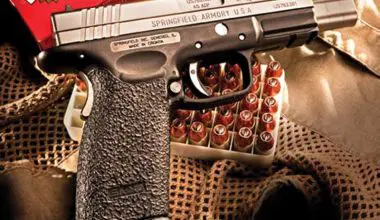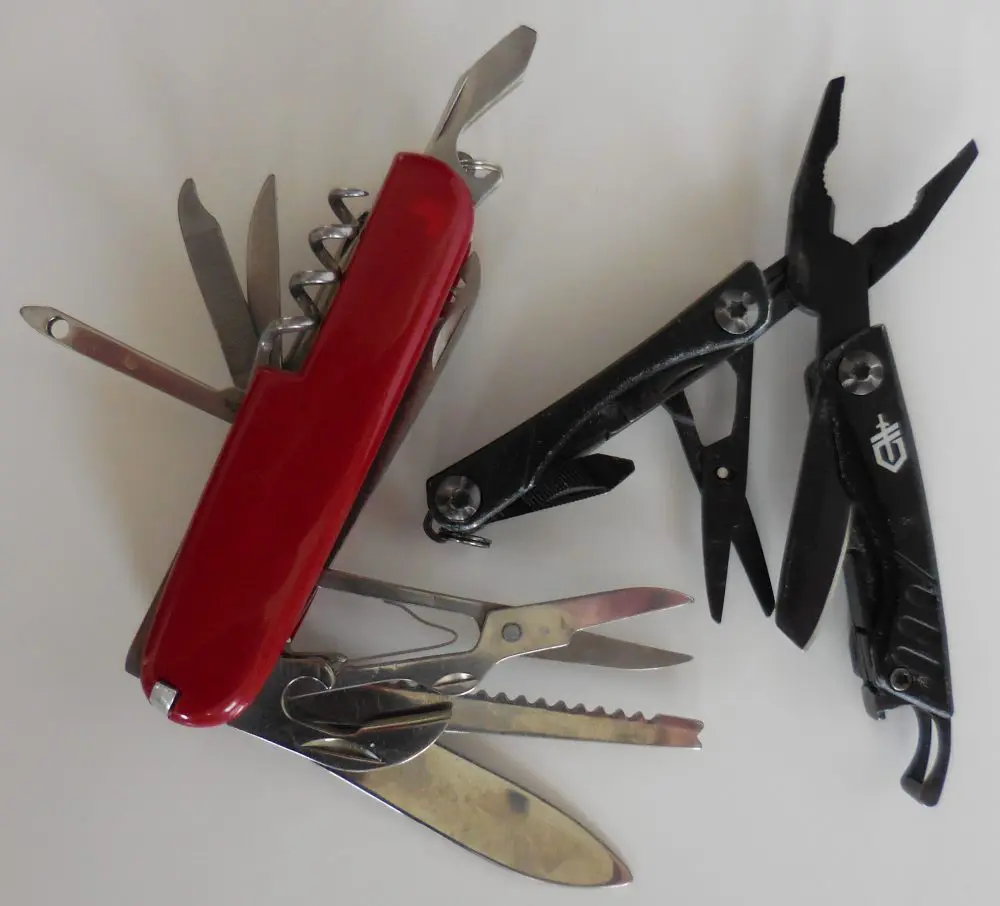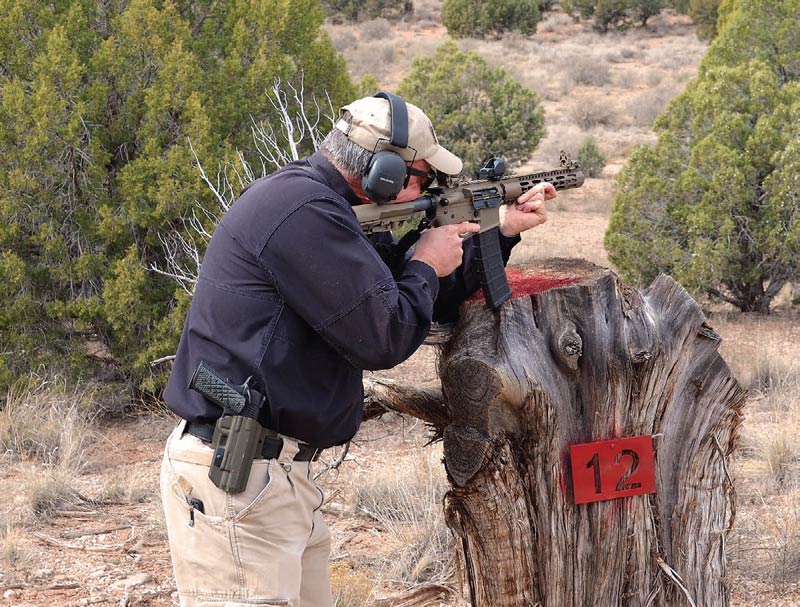
Being in a survival situation means different things to different people. To a hunter it might be stranded in a blizzard or a vehicle broken down in the desert. For folks on the West Coast, it may be lack of power and services due to an earthquake, and on the East Coast it may be from a hurricane.
Some foresee the proverbial zombie apocalypse, and for some a survival situation might be when your wife answers the door and your pregnant girlfriend is standing there.
Last December Dick Williams, affectionately known in the industry as “Uncle Dick,” contacted me with an intriguing idea: assemble a select group of six writers and ask them to choose one handgun and one rifle for the survival situation they envision, and bring them to train with at Gunsite.
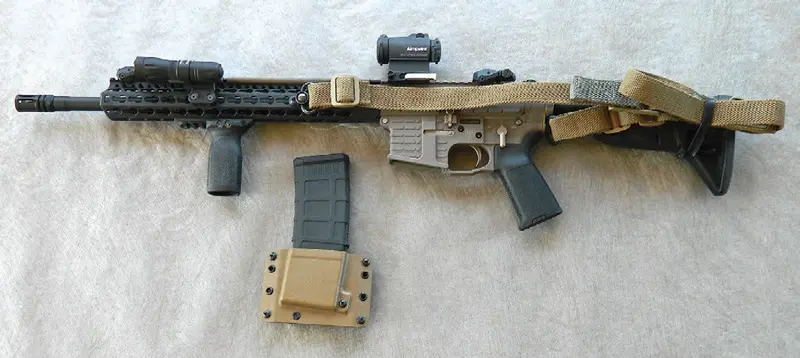
Table of Contents
TRAINING DAY 1
The Guns
On the first morning, each participant told the group what he brought and the reasoning behind it. In the way of rifles, there was one Springfield M1A and one Ruger Mini-14. These two attendees were from California and advised that neither of the rifles is likely to be added to that state’s banned list.
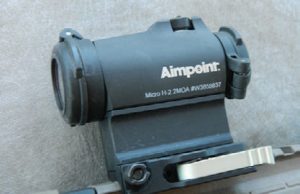
One participant had an AR shortbarreled rifle (SBR) with a suppressor chambered for .300 Blackout. His reasoning was that it could take big game without alerting anyone to his presence.
The last three were a scoped AR- 15 with 20-inch stainless match barrel with optic, an AR SBR with red dot sight, and a standard 16-inch barreled AR with red dot sight.
For pistols, there were two 1911s, one Magnum revolver, and three Glocks. Except for me, the participants made their picks mostly because they had used these platforms and felt comfortable with them.
My Picks: Carbine
For the purposes of this event, I envisioned the zombie apocalypse/societal breakdown scenario. For a carbine, I took my ROBAR PolymAR-15. It’s light enough to pack a fair distance without becoming fatigued, and spare parts, magazines and ammo can be found anywhere in the United States.
It was equipped with the recently released Aimpoint H-2 Micro red dot sight, Elzetta weaponlight, and Blue Force Gear Vickers sling.
In a survival situation, premium factory ammo may not be available, so I used my home-brewed .223 rounds with bullets made from fired .22 Long Rifle cases using Corbin swaging dies and fed from Gen M3 PMAGs.

Pistol
I believe this was the first time since Gunsite opened that I did not carry a 1911. I chose a Glock 19 for the simple reasons that it is easier to maintain long term and, like the AR, spare parts, magazines and 9mm ammo are plentiful.
Going once again on the premise that quality ammo may not be available, I installed a Lone Wolf Distributors Alpha Wolf barrel, which allowed me to shoot lead reloads. Made from 417 stainless steel, button rifled, threestage honed bore with SBN premium coating and flutes that allow a path for heat and debris to escape, this barrel makes the reliable Glock design even more reliable.
Let’s be honest: the plastic OEM Glock sights are less than optimal, so I replaced them with a set of Meprolight night sights.
I carried the Glock in a Raven Concealment Systems Phantom Modular holster (LAWFUL CARRY: Raven Concealment Gear, March 2016 S.W.A.T.) with Raven double pistol and single AR magazine pouches. I used 15-round Magpul GL9 PMAGs. I used my own 124-grain round-nose lead reloads, again because factory ammo may not be available.
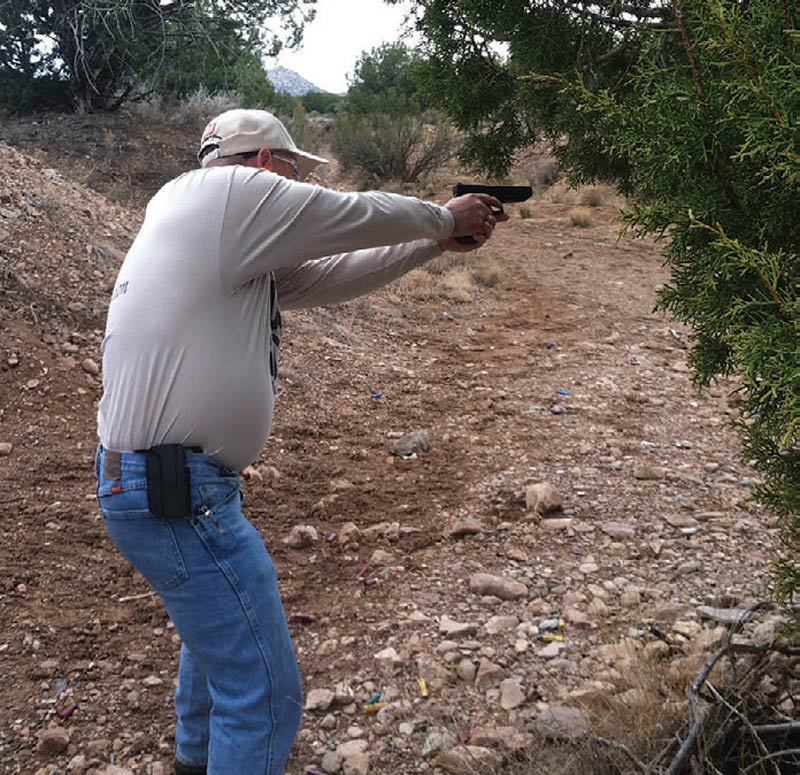
CLASS TIME
After the obligatory safety briefing (always a good thing), the participants met on a square range with Gunsite instructors Mike Moore and Gary Smith. The class progressed along the lines of a basic pistol class, but with just three days, only one of which was dedicated to handguns, drills were compressed into a shorter time frame.

Starting at the five-yard line, we fired single shots concentrating on accuracy and follow through, and then progressed to dedicated pairs, hammers and failure drills. Outside the purview of a basic class, we also fired while moving forward and backing up.

After lunch, we worked on nonstandard responses (NSRs) in which more than the usual two shots were fired. Facing turning targets, time limits for firing NSRs were condensed. Sometimes only one shot could be fired, and sometimes three or four could be fired before the target turned away.
TRAINING DAY 2
The second day began on the York Range, which can go back as far as 200 yards. The class zeroed their long guns and then confirmed zeros at 100.
For most, their groups should have been about an inch high at 100, resulting in the preferred 50/200-yard zero. My first five-round group from 50 yards was roughly one inch, perfectly centered but slightly low. Some quick corrections had all rounds into the center and 1.5 inches high at 100 yards.
Mike Moore and Gary Smith covered bore-line/sight-line offset and correct loading procedures. Most shooting was done from three to 25 yards and included shooting on the move, forwards and backwards.

After lunch, the group split, with half going to Woodfill Range for long-range rifle shooting and the other half going to the Scrambler. I had never pushed my home-brewed .223 loads past 200 yards and wanted to see how they performed at 300. At 200 yards, my groups measured about three inches. At 300, with the two MOA dot from my Aimpoint covering six inches and using only the magazine as a monopod, they opened up to about eight inches. Still “minute of bad guy,” so I was satisfied.
Hint: although the size of the dot does not actually change, decreasing the intensity gives the illusion of a smaller dot and permits more precise aiming.
My group then went down to the Scrambler, a seven-position course approximately 150 yards long that requires shooting from different positions as you move. Targets range from 80 to 200 yards. It is shot for score/time.
Full disclosure: I have lost some weight, and with a pistol, two 15-round mags and a 30-round PMAG on my belt, I apparently did not have my belt cinched tight enough. As I started to run from the second position, my trousers fell down almost to my knees.
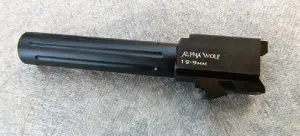
My fellow attendees seemed to get a kick out of it. More importantly, however, I defaulted to my training and did not muzzle anyone—including myself— and finished the course.
TRAINING DAY 3
The final day of the event was pretty laid back, with participants taking photos they needed for their respective articles, and a few runs on indoor and outdoor simulators.
We also shot the course known as the Military Crest, which is approximately 300 yards long and requires some unusual shooting positions over varying terrain to engage targets from 200 to 400 yards distant.
SUMMARY
I would like to give special thanks to the sponsors of this event (in alphabetical order):
- Elzetta Design: C333 lights
- Kleen Bore/Safariland: Tactical Gun Maintenance Systems
- Magpul Industries Corp: 30 AR/M4 GEN M3 PMAGs
- Maxpedition: Wolf Gray Ordnance™ Range Backpacks and American flag patches
- Propper: Foul Weather Parkas
- Revision Military Ltd: StingerHawk eye protection
- Spyderco: Street Bowie and Native 5 Folder
- Sturm, Ruger & Co, Inc: range box that included their ARX ammo and signature series folding knife
- Walker’s Game Ear, Inc: Ultimate Power Muff Quads
Many events like this have swag bags that may or may not be truly useful. This was all top-quality gear that served a purpose.
Overall this was an interesting experiment, and I’m looking forward to a follow-up event that Uncle Dick is planning. Whether or not you are able to do the type of shooting we did during this event, you can and should consider (and then practice with) which pistol and rifle you would arm yourself with in different possible survival situations. What are the most plausible survival scenarios for your individual circumstances, depending on where you live and travel? And which firearms would be most appropriate for those scenarios?
